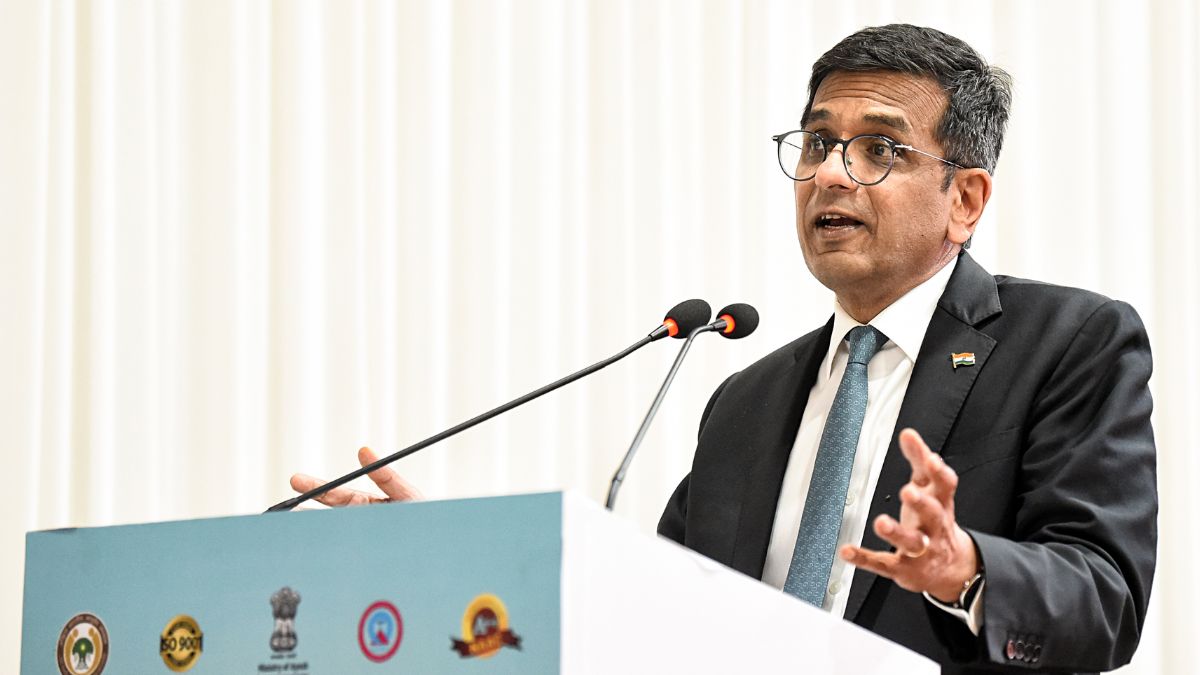Air pollution in Delhi has reached alarming levels, impacting even the Chief Justice of India, DY Chandrachud. He recently announced the cessation of his daily morning walks due to concerns about his respiratory health. This decision highlights the severe and widespread effects of air pollution on the population, impacting not only ordinary citizens but also individuals in positions of high power and influence. The alarming state of Delhi’s air quality underscores the urgent need for comprehensive and effective solutions to mitigate the pollution crisis. This narrative also sheds light on the proactive steps being taken to improve accessibility and efficiency within the Supreme Court system, including changes to journalist accreditation and advancements in digital record management and AI-powered translation of judgments. The combination of personal health concerns directly tied to environmental factors and progressive modernization within the court system create a multifaceted and compelling story about current events in India.
The CJI’s Health Concerns and Air Pollution
The Impact of Delhi’s Air Pollution
The Chief Justice’s decision to halt his morning walks due to deteriorating air quality serves as a stark reminder of the severity of Delhi’s pollution problem. The levels of pollutants in the air are so high that they pose a significant risk even to healthy individuals, as evidenced by the doctor’s advice to the CJI to limit outdoor activity during peak pollution times. This isn’t simply a matter of inconvenience; it’s a public health crisis impacting every resident, and the fact that it is directly affecting a figure as prominent as the CJI emphasizes the urgency of the situation. Children, the elderly, and those with pre-existing respiratory conditions are disproportionately affected, highlighting the critical need for both immediate mitigation efforts and long-term strategies to control the emission sources. The CJI’s actions serve as a wake-up call to policymakers, citizens, and institutions, demanding immediate action to address this pressing issue.
The Need for Immediate Action
The CJI’s public statement underscores the seriousness of Delhi’s air pollution crisis. It isn’t merely an environmental problem; it’s a public health emergency affecting the very highest echelons of society. The Chief Justice’s public acknowledgment of this issue forces a discussion of the responsibility of all stakeholders to act. The sheer volume of particulate matter and other harmful pollutants demands immediate attention. Implementing stricter emission standards for vehicles and industries, increasing green spaces, investing in public transport, and promoting environmentally friendly practices must become top priorities. The fact that the Chief Justice has proactively taken measures to protect himself brings to the forefront the pervasive and severe danger posed by this crisis.
Supreme Court Modernization and Accessibility
Changes to Journalist Accreditation
The Chief Justice’s announcement of relaxing the requirement of a legal degree for accredited journalists at the Supreme Court represents a significant step towards greater transparency and accessibility. By removing this barrier, the Supreme Court is fostering wider coverage of its proceedings, thus increasing public awareness of legal matters and promoting a more informed citizenry. This move opens doors for a more diverse range of journalists to participate in court reporting, leading to richer and more inclusive coverage. It simplifies the process for those wanting to cover important legal proceedings, strengthening public trust in judicial proceedings and contributing to the Supreme Court’s reputation for openness and accountability.
Digitization of Court Records and AI Translation
The Supreme Court’s embrace of digitalization and AI technology for record keeping and language translation represents a substantial leap toward modernizing its operations. The implementation of digital records makes case files readily accessible to judges, enhancing efficiency and facilitating faster decision-making. Moreover, leveraging AI for translation significantly broadens the accessibility of court judgments to individuals from various linguistic backgrounds, promoting judicial transparency and inclusivity across a wider swathe of society. This digital transformation is pivotal to not only enhancing internal efficiencies but also fostering greater communication and engagement with the wider public. Retired judges are even providing crucial feedback, enhancing the translation quality. This exemplifies a commitment to accuracy and the pursuit of perfect clarity and precision.
The Future of the Chief Justice and the Supreme Court
The CJI’s Post-Retirement Plans
The Chief Justice’s statement about relaxation following his retirement reflects the incredible pressure and workload inherent in the position. This underscores the high stakes and immense responsibility he carries and allows for reflection upon his substantial accomplishments in the role. It also symbolizes a transition and shift in personal focus while acknowledging his contribution to upholding the country’s judicial system. The nation will await to see what path the Chief Justice chooses following his tenure, recognizing his distinguished legacy and expecting him to continue making positive contributions in other spheres.
The Supreme Court’s Ongoing Evolution
The ongoing modernization of the Supreme Court under CJI Chandrachud reflects a proactive approach toward increased transparency and accessibility. The court’s embrace of digital technologies, AI-assisted translation of rulings, and revised journalist accreditation requirements points to a forward-looking and evolving judicial system aimed at increasing inclusivity and facilitating public understanding of legal processes. The initiatives underline a clear commitment to making the court’s proceedings more efficient and available to all segments of the population, thus reaffirming its role as a pillar of a democratic and transparent society. The Supreme Court’s modernization initiatives lay a solid foundation for the continued efficient administration of justice and improved service to the Indian people.
Take Away Points
- The alarming levels of air pollution in Delhi necessitate urgent and comprehensive action to mitigate its health impacts.
- The CJI’s decision to stop morning walks due to air pollution highlights the severity of the problem affecting all citizens.
- The Supreme Court’s modernization initiatives are focused on increasing transparency, accessibility, and efficiency.
- The relaxed journalist accreditation criteria and utilization of AI and digitalization signal a forward-thinking approach within the court system.




